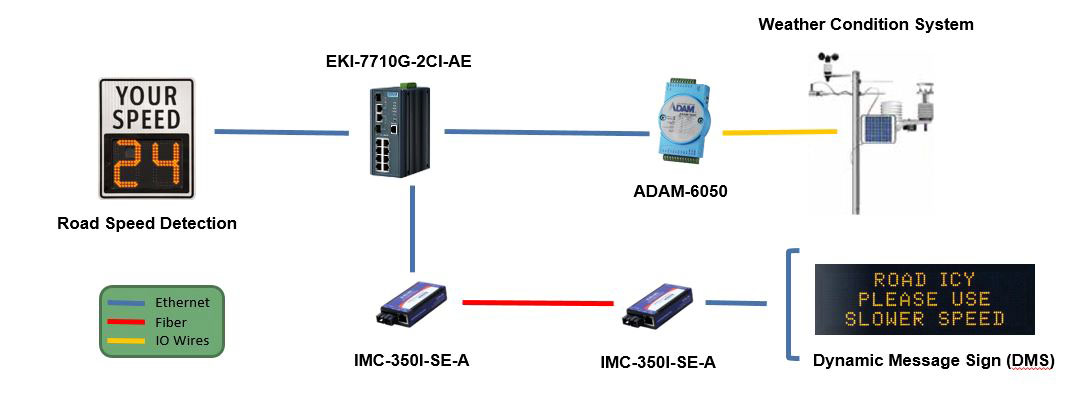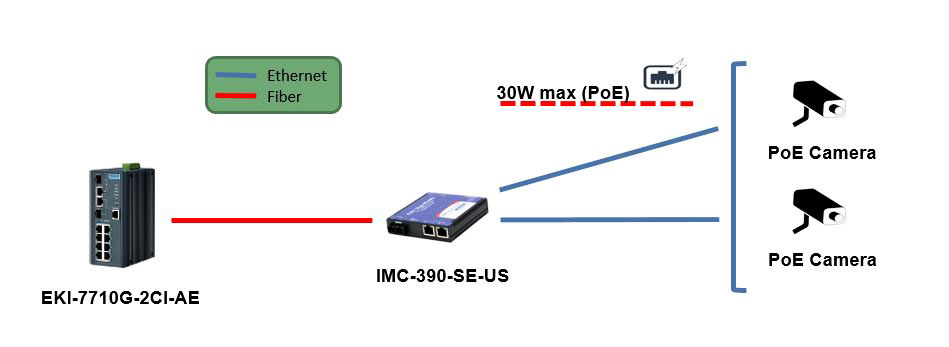Meeting NEMA TS2 Requirements for Traffic Control Applications
The National Electrical Manufacturers Association (NEMA) TS2 is a standard for traffic control assemblies, such as traffic lights, emergency road condition signs and walk/don’t walk signs. The standard is designed for manufacturers to meet or exceed a set of minimum requirements to ensure high network reliability in Intelligent Transportation Systems (ITS). Many ITS applications share the following characteristics: remote, outdoor enclosures; equipment that needs to support a wide temperature range; equipment that needs to survive a wide humidity range; and solutions that often have a combination of several different communication technologies. Advantech has tested products to meet or exceed the environmental aspects of the NEMA TS2 standard.
The Advantech product range covers traffic control cabinet applications that require Ethernet Switches, Fiber Media Converters, Serial Isolators, Ethernet Extenders, Ethernet Routers and Wireless communications equipment.
Traffic Control Solutions
Traffic Light Control
Several data communication products can help with traffic light control, such as copper extenders or fiber media converters.These devices are used to connect one traffic control cabinet to another traffic control cabinet. Ethernet extenders can be used for installations where wires already exist. For new installs or where fiber can be pulled to use, fiber is the best option. Many controllers still have a serial interface and can utilize IP or Ethernet to enable the traffic controller for remote monitoring. Serial servers can be used for field service, setup, and diagnostics.
Roadside Radar Applications
Roadside radar signs are usually mounted to a pole on the side of the roadway, or on a small mobile trailer. Radar data is sent when it’s needed to update information sent to digital signs or needed to dispatch law enforcement. When data is sent, managed Ethernet switches with fiber ring technology are used at the network backbone. For remote or temporary locations, cellular routers may be used. Serial servers are used to enable the radar detection devices with Ethernet connectivity, and serial isolators are used to protect remotely-mounted radar equipment in extreme weather conditions. Devices used in these applications must meet a wide temperature range of -34°C to +74°C, and be shock and vibration tested.
Roadside Digital Signage
For digital signage, the larger network will consist of managed Ethernet switches connected to a serial server, or to a fiber media converter that connects to the serial server. Serial servers are used to convert the Ethernet signals to serial signals. If needed, serial isolators or serial to fiber modules are ideal for isolating and protecting devices.
What to Use
IMC Media Converter (IMC-350I-SE-A)
EKI Ethernet Switch (EKI-7710G-2CI-AE)

Parking Solutions
In parking lot control applications, connected devices can help with ticketing systems, control arms, teller houses, security cameras, digital signs and more. Ethernet extenders are ideal for creating a data connection to parking booth, as they work great in situations where there are already existing wires.
When connecting multiple devices, use serial servers and Ethernet switches. Isolation offers additional protection for installed equipment. Fiber is a good choice for reliability when dealing with varying weather conditions.
What to Use for PoE Cameras
IMC Media Converter (IMC-390-SE-US)
EKI Ethernet Switch (EKI-7710G-2CI-AE) with SFP Option

NEMA TS2 Product Benefits
Why Ethernet Routers? |
Why Ethernet Extenders? |
|
|
Why Ethernet Switches? |
Why Ethernet Serial Servers? |
|
|
Why Ethernet Media Converters? |
Why Serial Products? |
|
|
Why Wireless and Cellular Products? |
|
|

